The artisans keeping their heritage crafts alive
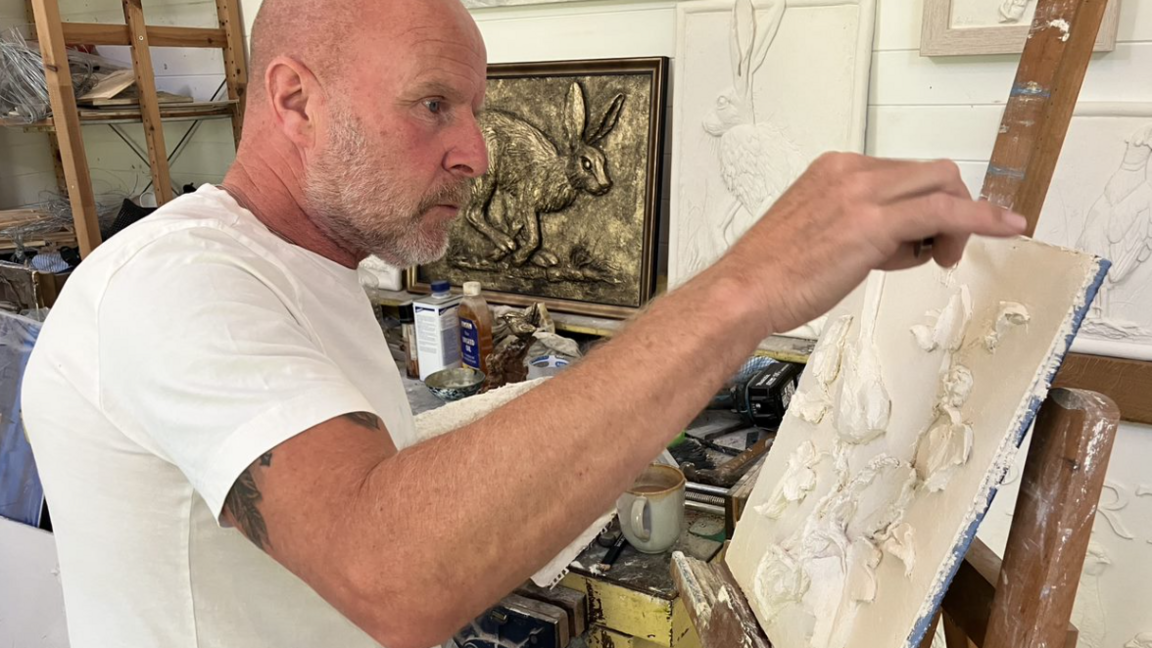
Ian Warren is an expert at pargeting, one of 90 endangered crafts in the UK
- Published
Traditional skills - some of which have been around for millennia - are at risk of dying out because so few people practise them. Three artisans, whose heritage crafts are on a national Red List, have given their thoughts on what can be done to pass their skills to the next generation.
'We need to do manufacturing ourselves'
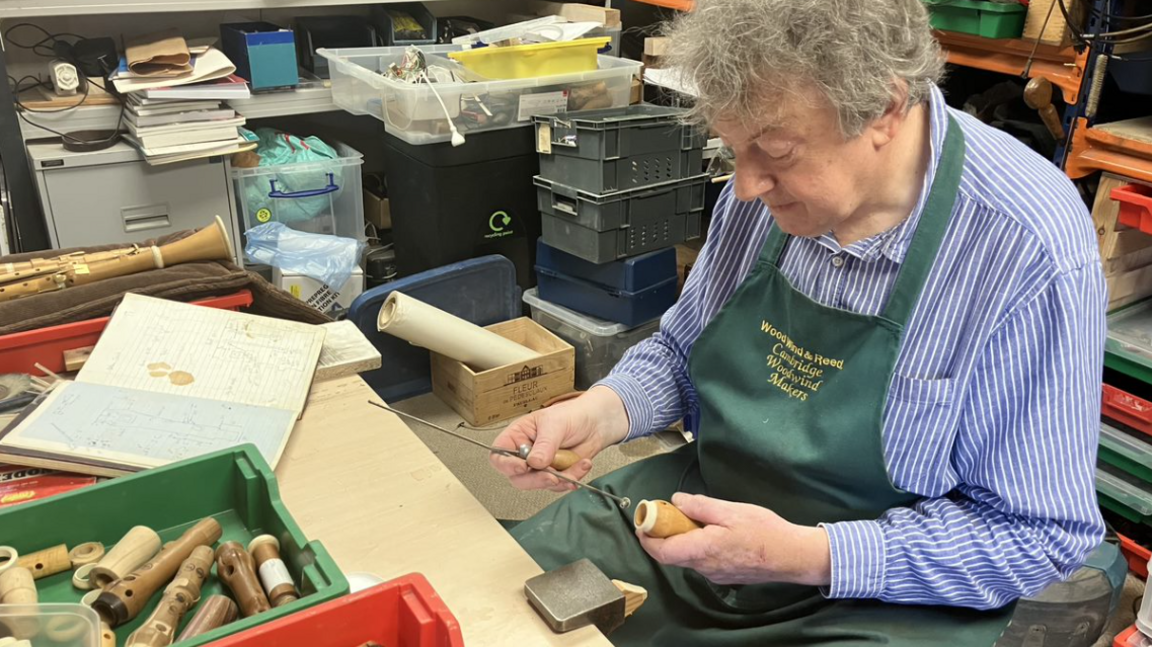
Daniel Bangham has been singled out for praise by charity Heritage Crafts
Daniel Bangham is an endangered species.
According to national charity Heritage Crafts, external - which promotes and supports traditional UK crafts - there are "serious concerns" about the "ongoing viability" of his trade of 45 years.
Woodwind instrument making, which Mr Bangham does at his own workshop in Linton, Cambridgeshire, is among more than 90 crafts it classes as endangered.
There are just enough skilled craftspeople to keep the work going, and to educate others - for now - but more is needed to be done to safeguard its future.
There is clearly a demand for his work: top musicians still need bespoke instruments that are not mass-produced.
"Professional players depend on craftsmen to get the last five to 10% out of their instruments," said Mr Bangham.
"Without the instrument maker, you can't have musicians at the top of their game because a top musician will need constant contact with a maker and repairer to get the very best of their instruments."
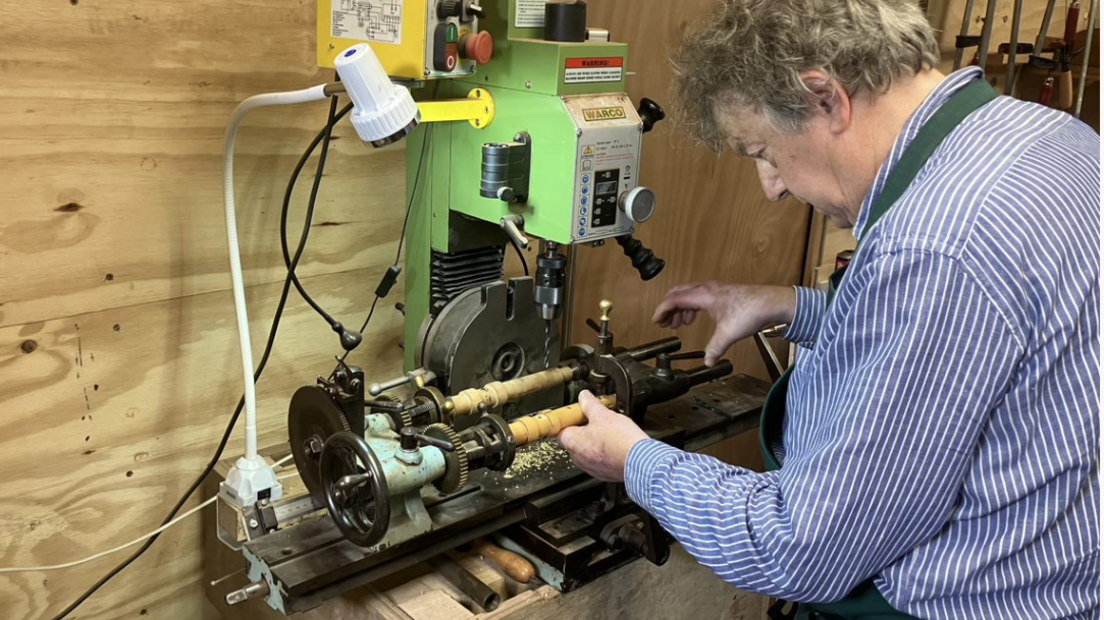
Makers like Daniel Bangham are all about attention to detail
Manufacturing of woodwind instruments - as with many other things - has moved to East Asia, he says, but the reliance on imports needed to change.
"As a nation we need to do primary manufacturing ourselves, everything from steel, through to making microscopes and musical instruments," he said.
"People will still want to hone their skills, but they have to be given the opportunity, the environment and the encouragement."
Heritage Crafts has singled him out for praise for being one of the few people to take on apprentices.
Ten years ago, he set up a workshop studio to teach skills to others.
"We have enabled 250 instruments to be made, and of those we have had four people who have become professional," he said.
But Mr Bangham believes the trade could die out because apprenticeships are "not easy or affordable".
"Very often someone will go into a profession obliquely, they never thought they were going to go there," he said.
"They started making a small widget, found they would be good at it, then got more interested in the bigger picture and became a dedicated craftsman."
'You never stop learning'
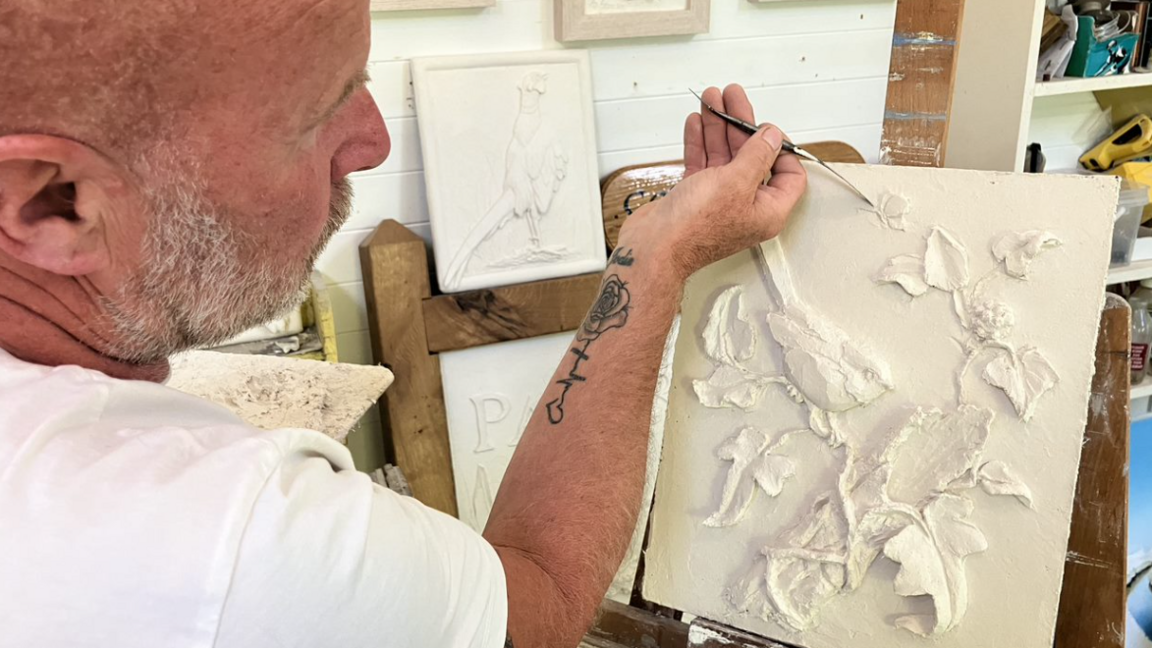
Ian Warren has adapted his craft to create panels that can be displayed indoors
You may have seen examples of Ian Warren's craft, but perhaps not known what it is called.
Freehand or moulded plasterwork - pargeting - is prominent in East Anglia and is used to create motifs of coats of arms, fruits, animals, or even entire scenes on buildings.
It has been a skilled craft in England since King Henry VIII brought in Italian plasterers to decorate one of his palaces.
Mr Warren, who works out of Tillingham, near Southminster in Essex, is one of just 11 pargeters known to Heritage Craft.
"You can see it around Lavenham and Clare [both near Sudbury in Suffolk], where they had men with more money," said Mr Warren.
"They had pargeting done to let everyone know that."
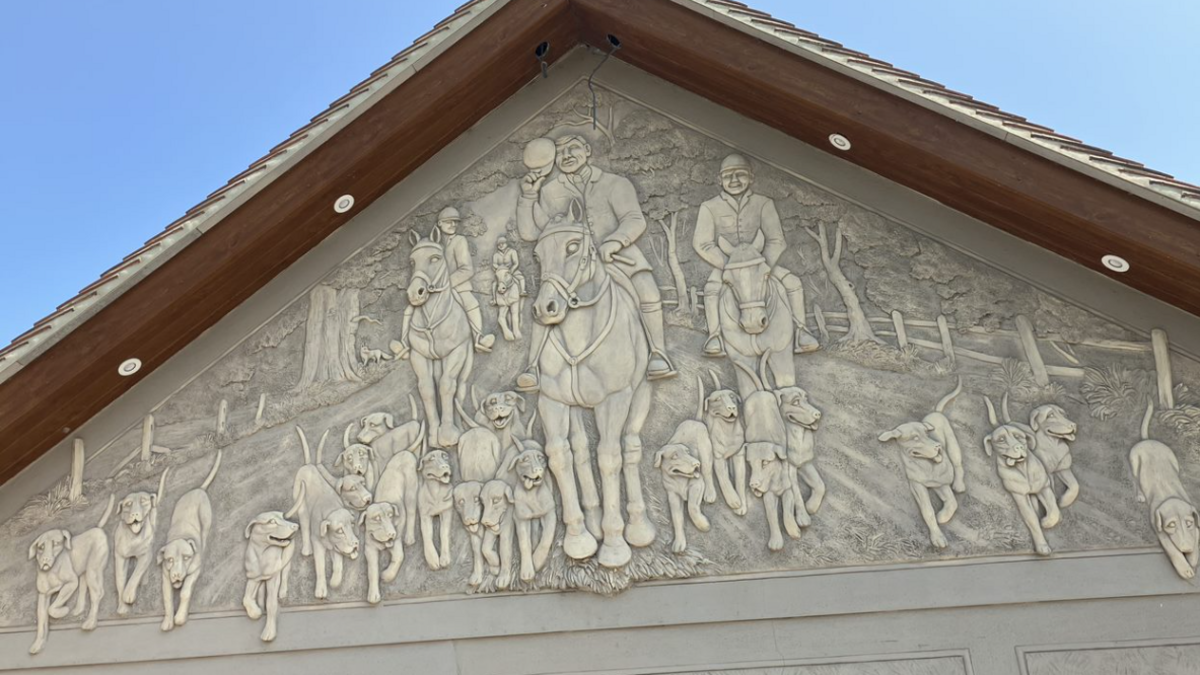
Pargeting can be a simple leaf design - or an elaborate fresco
Heritage Crafts believes the issues affecting pargeting include changing tastes in housing design and the strict restrictions imposed by conservation legislation.
It can also be expensive and takes time, which does not correlate with competitive tendering processes.
Mr Warren has seen all these problems, as well as commonly-used materials not being up to the task.
"Modern rendering is now resin, it's not sand, cement and lime anymore, it's prebagged and it doesn't lend itself to pargeting," he explained.
"Flat rendering is cheaper and some [building] designs are very boxy; it looks wrong on a modern house."
Nevertheless, he is hopeful for the future. He has diversified by pargeting on to small panels which can be hung inside as works of art "that will last hundreds of years".
"I've been doing it 35 years and I've never been out of work, but I have adapted by doing these smaller things," he said.
"I started doing panels to take to shows, and because I don't like going up scaffolding in the winter anymore.
"There are builders and developers, especially around here, that still want that look, it's sellable."
Heritage Crafts points out that practitioners need "considerable artistic talent" and also want a labour-intensive job.
There is no training school, apprenticeships or courses beyond the occasional introductory day school.
"You never stop learning," said Mr Warren, who is self-taught.
"I think you need to be like myself, you've got to be enthusiastic and work for yourself.
"You have to have a bit of artistic flair in the first place.
"I could teach someone to a standard, but they have to have that bit about them to take it on their own."
'People have done this for centuries'
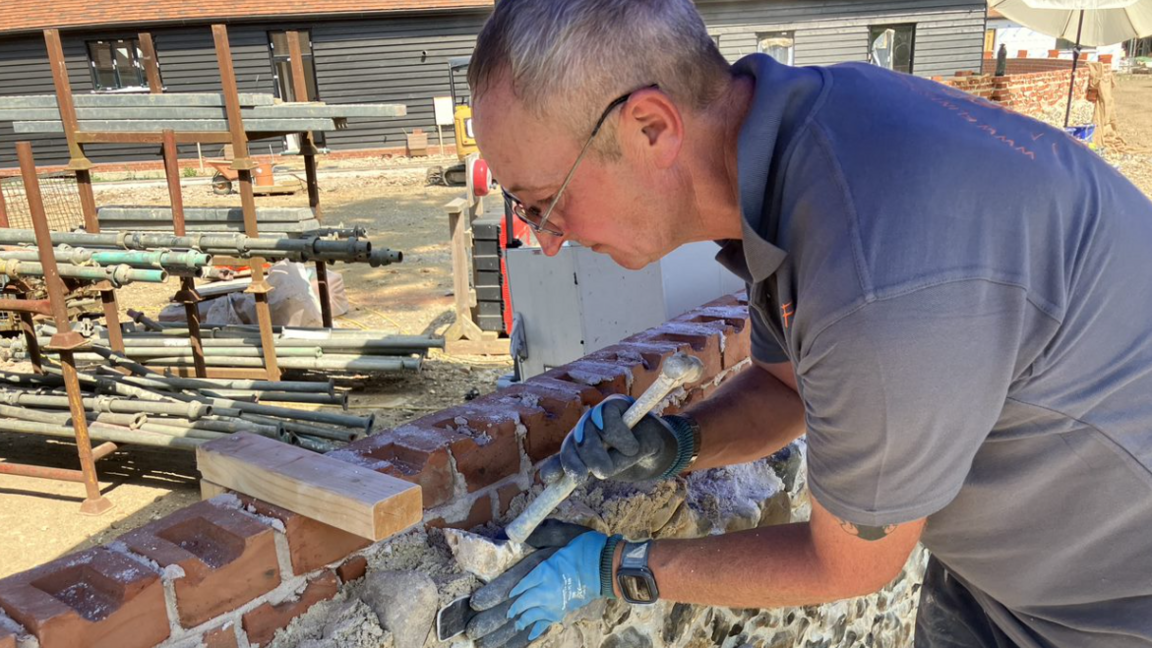
Mark Clifton said he "fell" into flint-working as a trade
Mark Clifton's trade of flintknapping - the shaping of flint by "percussive force" - has been around since the Stone Age but could die out because of a skills shortage.
Heritage Crafts says the work is "extremely challenging" - it requires technique, accuracy and good hand-eye co-ordination.
Mr Clifton, who works out of Bury St Edmunds in Suffolk, agrees.
His type of flintwork is for the building sector, with Mr Clifton breaking the stones to specific sizes and shapes to create a flush finish on walls.
It is time consuming, back-breaking work, with few skilled people still doing it in the UK.
"I spend half my time on my knees, and as you get older it gets painful," he said.
"It's a very manual job.
"You break the flint in half and then you trim it to fit them around each other, and then fit into the wall."
Churches and other heritage buildings need the real deal like Mr Clifton.
But the shortage of craftsman - and lack of training opportunities - means that, elsewhere, cheaper walls are often created by pressing the stones into concrete as a "short cut", Heritage Crafts says.
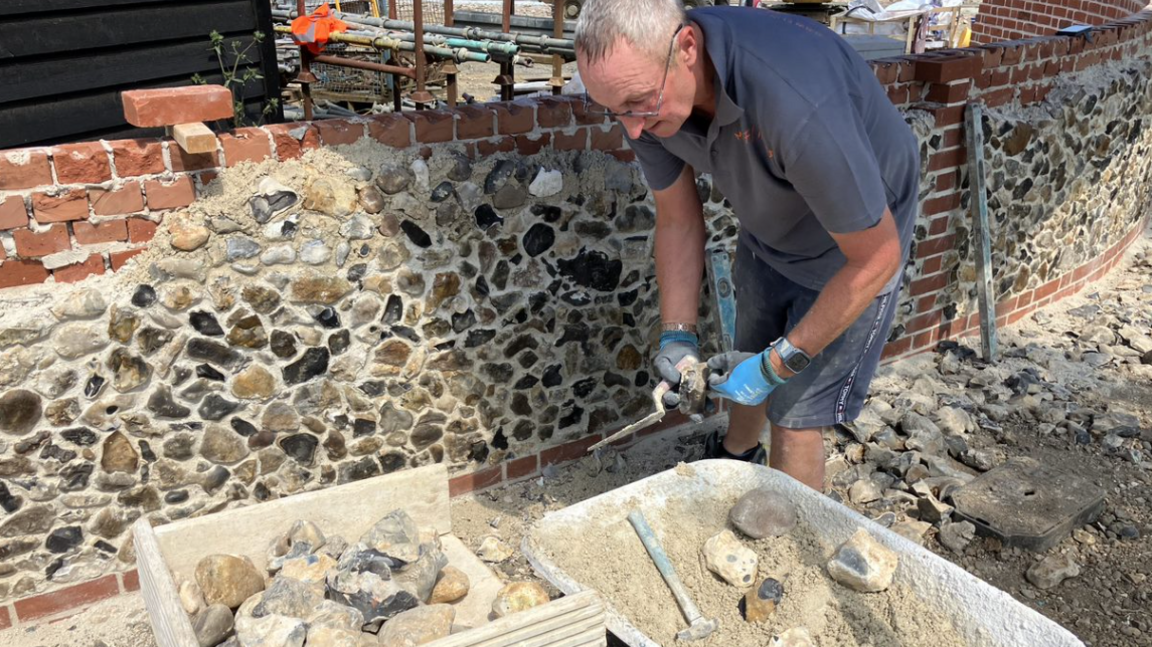
Mark Clifton has worked with flint for more than 30 years
"Not enough people are getting into it," added Mr Clifton.
"There are just a handful of good ones, across the country.
"I fell into it... I'd never knapped in my life but had done whole stone, had slightly the wrong tools to begin with, and went from there.
"It's quite a skill."
He said he hoped its growing popularity as a feature of modern buildings could be its saviour, but colleges needed to offer courses.
"It makes me sad that it could die out," he added.
"People have been flintknappers for centuries.
"When you think people would quarry flints and knap them at Grimes Graves [a prehistoric flint mine in Lynford, Norfolk].
"I still might train someone; I've had apprentices in the past, they've stuck to the course, some have now done it for 28 years."
Published annually by Heritage Crafts, the Red List categorises five skills as extinct, 70 as critically endangered and more than 90 as endangered.
"The Red List underscores the urgent need for greater investment and support to safeguard these skills for the next generation," said Daniel Carpenter, executive director of Heritage Crafts.
"Reversing this decline would represent not just the continuation of skilled trades, but also a significant boost to the UK's cultural heritage and countless opportunities for future innovation."
Get in touch
Do you have a story suggestion for the East of England?
Follow East of England news on X, external, Instagram, external and Facebook: BBC Beds, Herts & Bucks, external, BBC Cambridgeshire, external, BBC Essex, external, BBC Norfolk, external, BBC Northamptonshire, external or BBC Suffolk, external.
- Published9 July
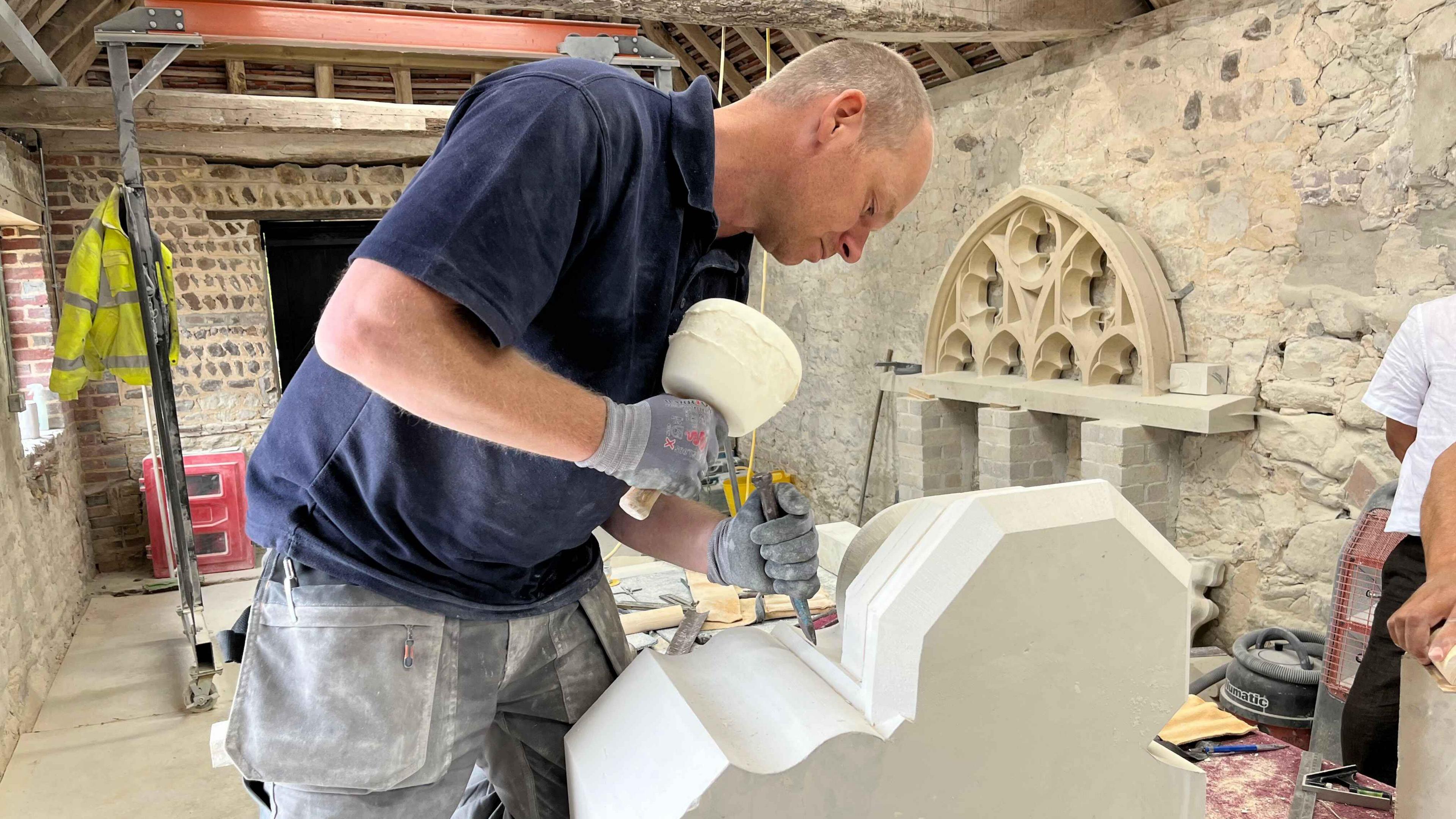
- Published5 May

